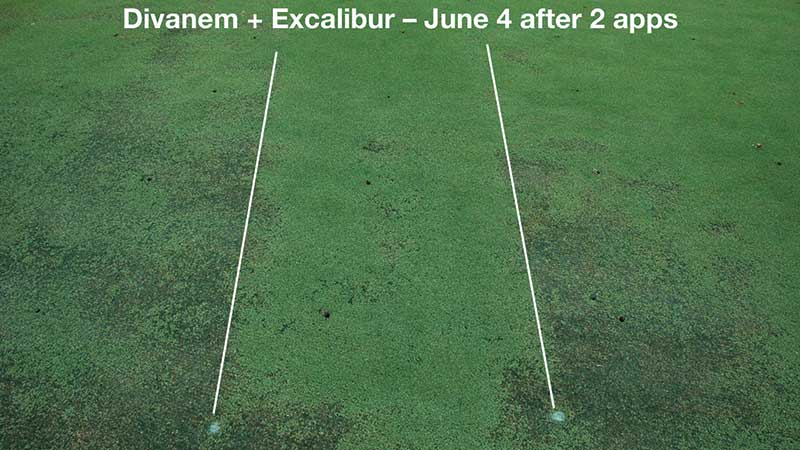Fall broadleaf weed control in cool-season turf

Dave Gardner, Ph.D., is a turfgrass scientist at The Ohio State University. Dave has conducted numerous weed management and control research projects to help superintendents achieve effective broadleaf weed control. You may reach Dave at gardner.254@osu.edu for more information.
Why is fall a good time to control broadleaf weeds in cool-season turf?
Two reasons. One, winter annual broadleaf weeds such as common chickweed germinate in late summer and early fall. Winter annual broadleaf weeds are more susceptible to herbicides in fall and therefore easier to control than in spring. The second reason is that perennial broadleaf weeds are translocating carbohydrates from leaves to roots in fall. A broadleaf weed herbicide applied in fall will be carried down to the roots along with the carbohydrates, resulting in complete control of the weed. On occasion, a broadleaf weed herbicide applied in spring will control only the leaves of the weed and not the roots, so the weed will recover.
How late in fall can a broadleaf weed herbicide be applied and still be effective?
It depends on the weed species, condition of the weed, the herbicide to be applied, location and weather. In general, in Ohio, we recommend that broadleaf weed herbicides be applied by mid-October. That said, in some cases, superintendents can achieve good broadleaf weed control with applications made in the first or second week of November.
Be aware that the leaves of some weed species such as wild violet and ground ivy degrade in late fall, and there may not be enough viable leaf area to intercept and take up the herbicide to provide effective control.
Some new active ingredients are effective in cooler weather, and some new combination herbicides also are effective in cooler weather. In addition, ester formulations are much more effective in cooler weather than amine formulations.
What tips do you have to make a fall application of a broadleaf weed herbicide as effective as possible?
Use an ester formulation when air temperatures are in the 50s F. Apply the product in 2 gallons of water per 1,000 square feet to achieve good coverage of the leaves. Broadleaf weed herbicides are formulated with the proper adjuvants, and there is almost never a need to add an adjuvant.
What is a good strategy to control mouse-ear chickweed, common chickweed and white clover in creeping bentgrass fairways?
First, select a product labeled for use on fairways and that is safe for use on creeping bentgrass. Apply the product by mid-October. Common chickweed will have germinated by then. Make sure both the weeds and turf are in good health, green and growing slowly.
Are there any new promising active ingredients for broadleaf weed control that superintendents should consider using?
GameOn (halauxifen-methyl plus 2,4-D choline plus fluroxypyr, Corteva Agriscience) is extremely effective on wild violet, ground ivy and other broadleaf weeds. Plus, it will control buckhorn plantain that is resistant to 2,4-D.
Sure Power (2,4-D plus triclopyr plus fluroxypyr plus flumioxazin, Nufarm) is effective on ground ivy and other broadleaf weeds. Some people have reported turf phytotoxicity when Sure Power is applied to actively growing turf. To be safe, apply Sure Power in either in midsummer or in October to control ground ivy and other broadleaf weeds.
Vexis (pyrimisulfan, PBI-Gordon) is a granular formulation that controls sedges and kyllinga species along with broadleaf weeds.
Is there anything else you would like to add?
Carefully read the label before using any herbicide. Trade names change, and sometimes it can be confusing. There have been unfortunate incidents of an herbicide being applied that damaged turf because of confusion surrounding the name.










